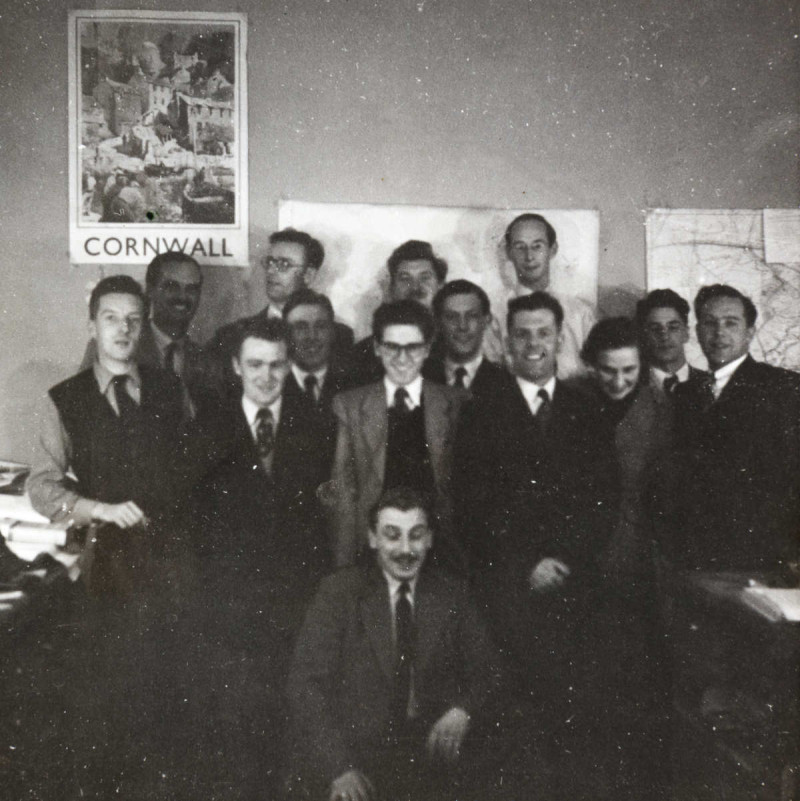
As part of the New Jerusalems new towns project, funded by the Wellcome Trust, we are cataloguing, and conserving, the records of the Bracknell Development Corporation, 1949-1982. These records provide a fascinating insight into the history of Bracknell, town planning, new towns, architecture and more. You can search NT/B in our catalogue to learn more about this collection and don't forget to check out our blog pages and social media accounts for more insights into the records.
New Town designation and formation of the Corporation
Bracknell was designated a New Town on 17th June 1949 under the New Towns Act 1946. Bracknell was chosen as its population was less than 5,000, was close to London, had a railway station, motorway links, and was outside of London’s green belt.

On 20th October 1949, the Bracknell Development Corporation was created by government. It was tasked with planning, building, and managing Bracknell, with the aim of creating a town for 25,000 people. In 1961 and 1962 Bracknell’s designated area was extended to 3,000 acres and its goal population rose to 60,000.
Planning Bracknell New Town
Planning, constructing, and managing Bracknell was no small task. One of the Corporation’s first actions was to create a Master Plan setting out its plans to develop Bracknell. The Corporation’s first Master Plan was published in 1954 and was followed by other Master Plans, after Bracknell’s designated area was extended.
Unlike most other New Towns, the Bracknell Development Corporation devised its Master Plan without the assistance of consultant planners.
![Master Plan of Bracknell 1954 ref. NT/B/ACC8723.3 [reference will change once catalogued]](/storage/app/media/Bracknell%20NT%20page%20pics/cropped-images/NT-B-acc8723_3%20ed-0-0-0-0-1684323859.jpg)
Everything built in Bracknell from 1949-1982 had to be reviewed and authorised by the Corporation. As a result, there are thousands of planning drawings of residences, factories, offices, shops and more.
Homes and neighbourhoods
The Corporation planned and constructed ten residential neighbourhoods Priestwood, Wick Hill, Easthampstead, Bullbrook, Harmans Water, Wildridings, Great Hollands, Birch Hill, Hanworth and Crown Wood.
The Corporation tried to keep as many existing houses in Bracknell as possible and built a further 15,000 homes.
Bracknell was designed to be innovative and exciting, easily navigable by driving, cycling and walking. New Towns were envisaged as utopian towns that could meet all its resident’s needs.
Who built Bracknell?
Hundreds of staff members worked for the Corporation as Board members, architects, engineers, surveyors, lawyers, landscapers, financial officers, builders, and more. The Corporation also worked with consultant architects, engineers, and landscape architects.

Today Bracknell is one of the most successful and is the most prosperous New Town in the UK.
Accessing the collection
Details of some items of the Bracknell Development Corporation collection are available through our online catalogue and can be viewed on a visit to the RBA. It is advisable to book to avoid disappointment. Please see our Planning a Visit page for details on how to book.
As the collection is currently being catalogued, some records may not be available yet. The project will finish at the end of the year, and the full collection will be available from December 2023.
If you would like to find out more about the New Jerusalems Project and the other new towns, please see the New Jerusalems website.
Further stories about Bracknell on our website
There are a few other stories about Bracknell that have been drawn out of the collection through the project. Simply can click on the links below to discover more.
